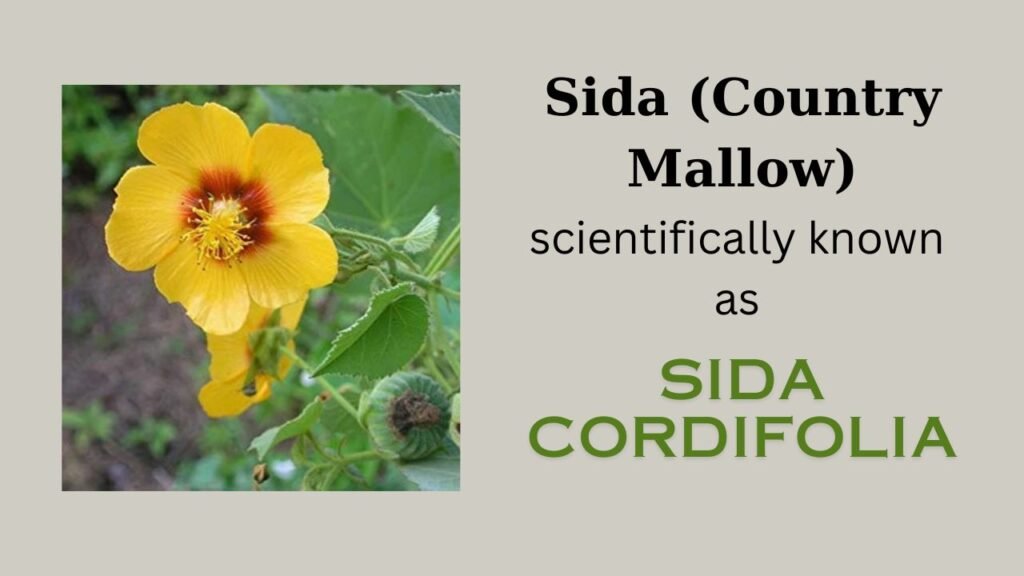Sida (Sida cordifolia), commonly known as Country Mallow or Bala in Ayurveda, is a small, perennial herbaceous plant belonging to the Malvaceae family. It is found in India and tropical regions around the world and thrives in dry, open habitats. This plant is characterized by its heart-shaped leaves, yellow flowers, and hairy stems. Sida has been traditionally used in Ayurvedic medicine. Although considered a weed in some regions, here is an overview and floral formula of this plant.
Scientific Name: Sida cordifolia
Some Basic Information about Sida (Country Mallow) Sida cordifolia
Habit – Perennial herb or undershrub
Root – Tap root system
Stem – Erect, cylindrical, branched, solid, covered with fine hairs (pubescent)
Leaf – Simple, alternate, petiolate, ovate to cordate (heart-shaped), serrate margin, stipulate, unicostate reticulate venation
Inflorescence – Solitary axillary or sometimes cymose
Flower – Bracteate, pedicellate, complete, regular, actinomorphic, hermaphrodite, hypogynous, small, yellow
Calyx – Sepals 5, gamosepalous, valvate aestivation, epicalyx absent or rudimentary
Corolla – Petals 5, polypetalous, twisted (contorted) aestivation
Androecium – Stamens numerous, monadelphous, anthers dithecous, introrse
Gynoecium – Pentacarpellary, syncarpous, ovary superior, pentalocular, axile placentation, style branched, stigma capitate
Fruit – Schizocarp (breaks into mericarps)
Systematic Position:
Division – Phanerogamia
Subdivision – Angiospermae
Class – Dicotyledonae
Subclass – Polypetalae
Series – Thalamiflorae
Order – Malvales
Family – Malvaceae
Genus – Sida
Species – cordifolia

